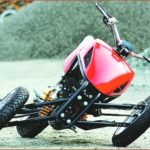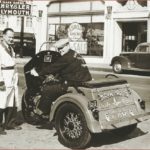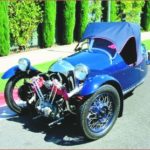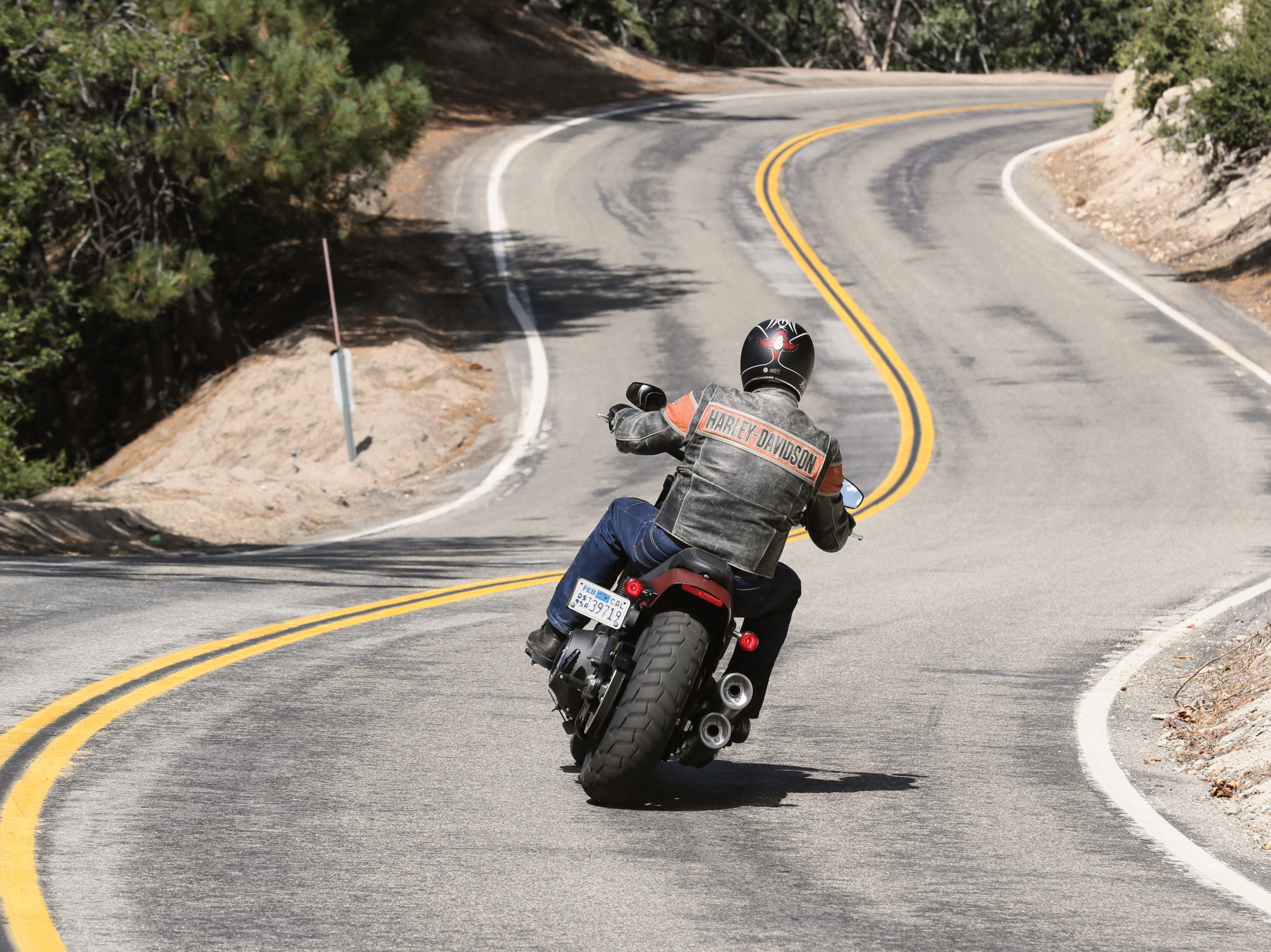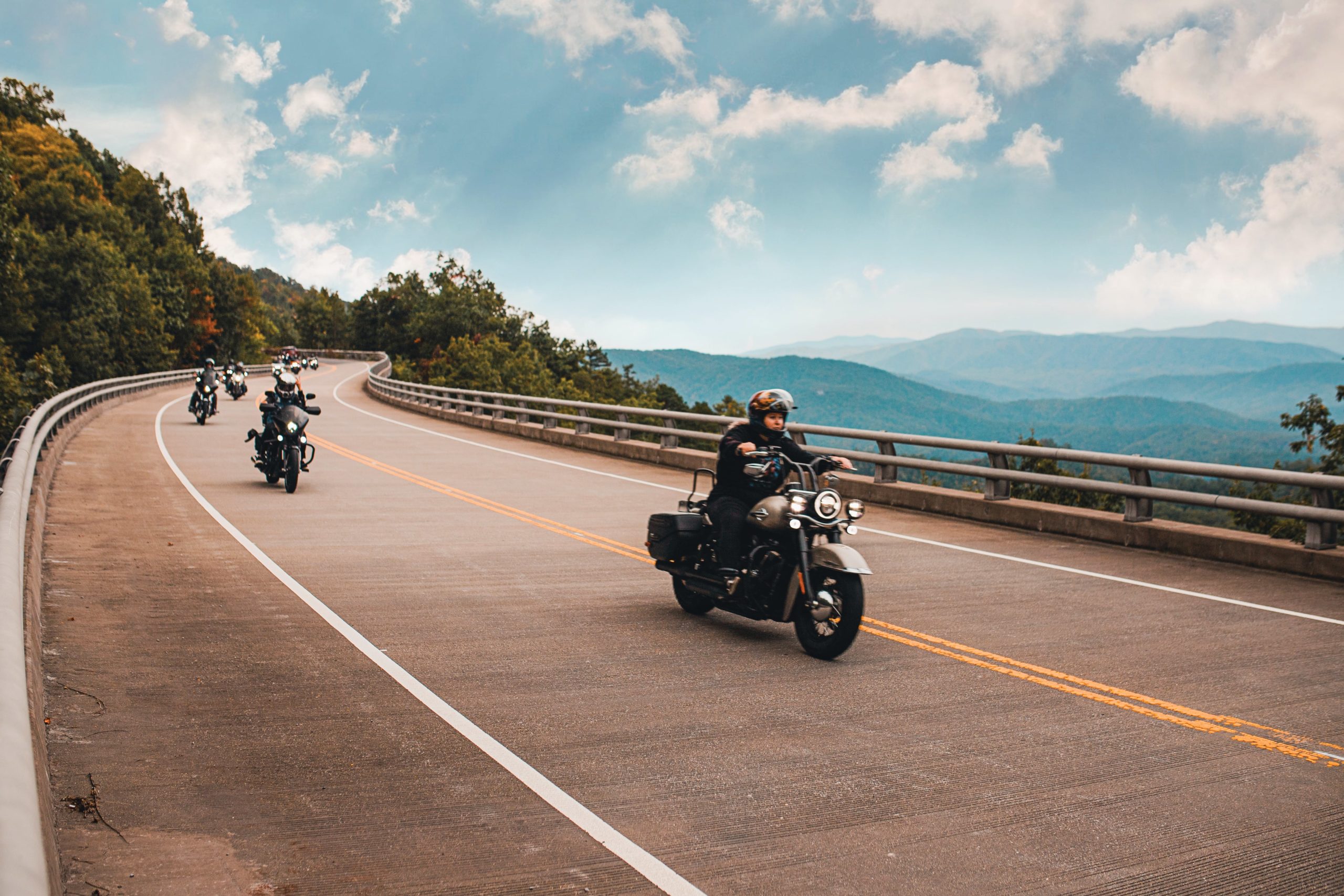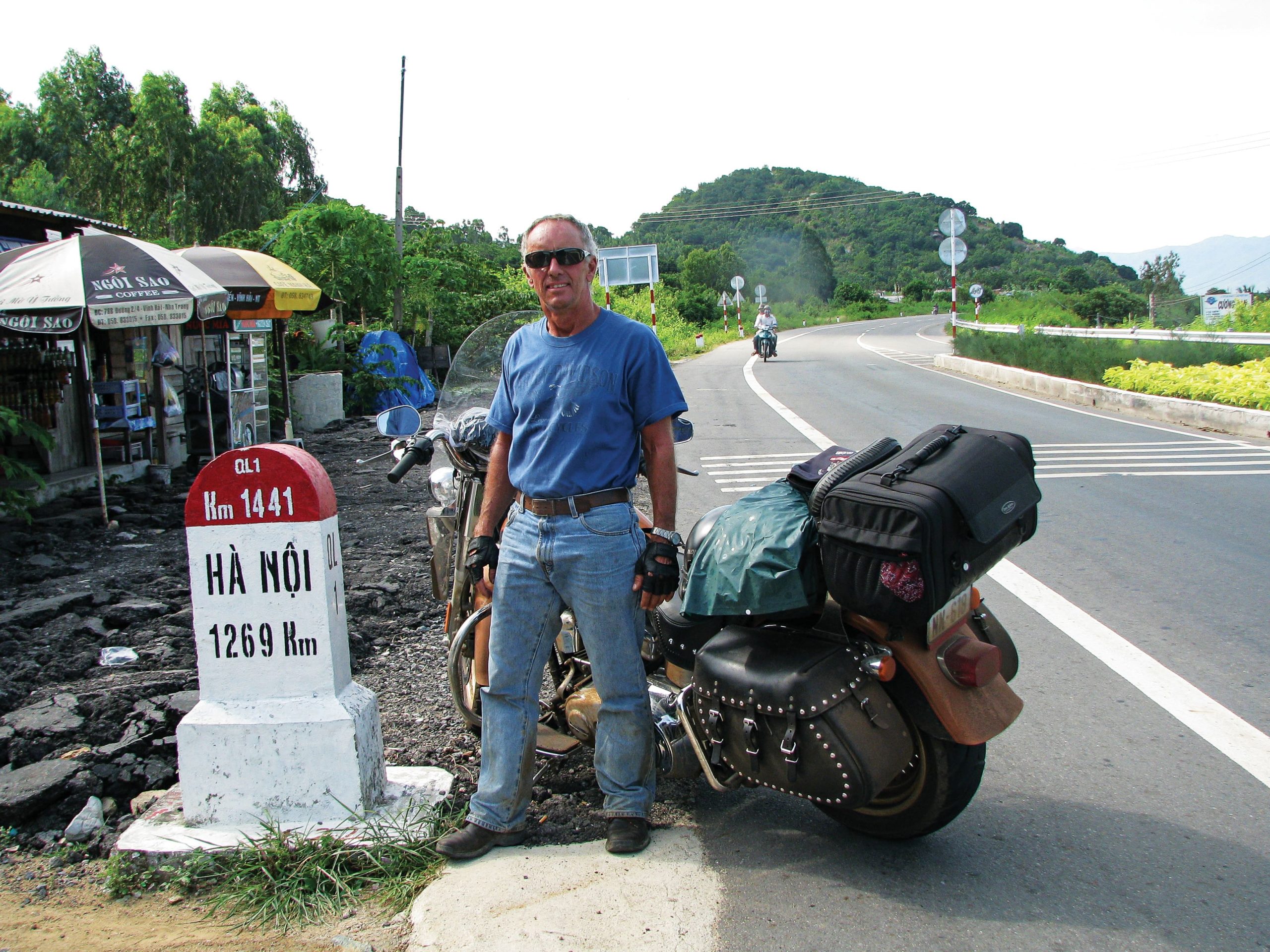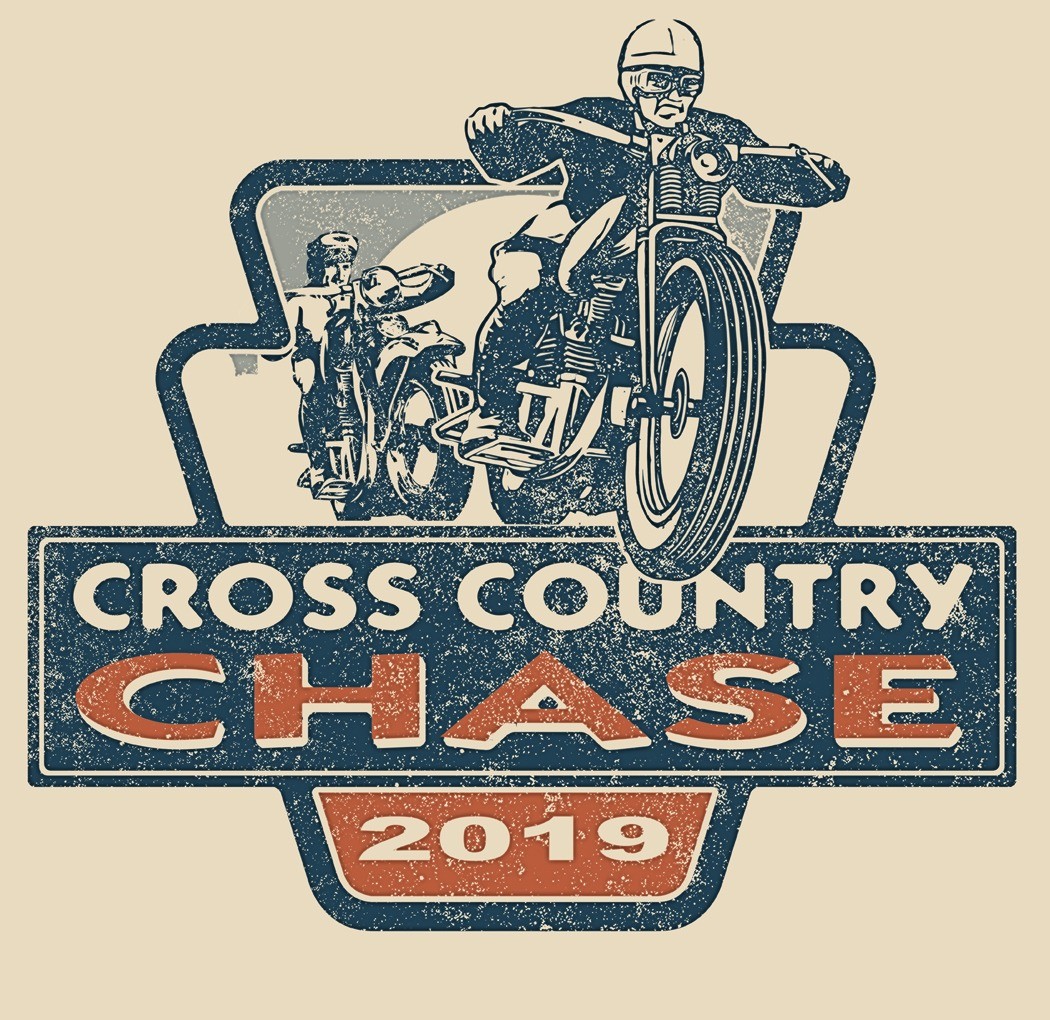A brief look at trike history
Trikes are proliferating on the scene at an unprecedented rate these days, with conversion kits being produced by a growing number of companies and designed for installation on a growing number of motorcycle models. Harley-Davidson has patented a threel-wheeled motorcycle called the “Kneeslider” and is in development with Lehman Trikes on a Harley-branded machine slated to appear in dealership showrooms sometime in the near future. Demo rides aboard the innovative Can-Am “Spyder” proved popular at rallies last season, and a Norwegian firm is manufacturing a similar trike (Brudeli 625L) with lean capability. Three-wheeled “cars” that tilt into corners and operate on both conventional and alternative fuels are already in production and will begin to be seen on America’s roads this year. This fascination with three-wheeled vehicles is not something new. In fact, the history of the trike begins with the first mechanically powered vehicle a full century before the motorcycle was invented.
The age of steam
Nicolas-Joseph Cugnot is recognized for building the first self-propelled vehicle to transport man in 1769. He’s also the first to have had a traffic accident. He built his three-wheeled fardier a vapeur with two wheels in back and a steam boiler and two-cylinder engine mounted over the front wheel. Designed to carry gun carriages, it had a top speed of 2 mph, but stopped every 10 minutes to build up steam.
Cugnot inspired William Murdock (a former student of James Watt) to build his own three-wheeled steam vehicle in 1784; Richard Trevithick in London saw Murdock’s vehicle and subsequently developed his famous steam trike in 1801. Dr. Church built a massive three-wheeled steam vehicle in 1833 that averaged 14 mph on its daily commuter run between Birmingham and London while carrying 44 passengers. This was a viable commercial enterprise until a law was passed limiting the speed of steam vehicles to 3 mph. The extremely wide, solid rollers were arranged in a single line and the weight of this huge vehicle flattened the ground it drove over— Dr. Church had inadvertently invented the steamroller.
Lucius Copeland developed a steam-powered trike in 1884 that had an automatic oil-fired boiler mounted behind the two seats and in front of the rear single wheel. The Northrup Manufacturing Company of Camden, New Jersey, produced them, but when reorganized in 1890 they renamed it the Motor-Cycle Manufacturing Company and thus coined a new word for the English language.
Karl Benz is often erroneously credited with developing the first car in 1885 (Siegfried Marcus was the inventor of the spray carburetor, spark plug, magneto, and first successful internal-combustion “auto-mobile” in 1875), but his auto-mobile was really a trike configured with two wheels in back and the smaller one in front. While a number of steam-powered three-wheeled vehicles were on the market, this was the first with an internal-combustion engine. The first road trip for a gasoline-powered vehicle took place when Frau Beta Benz borrowed Karl’s trike one night in 1888 and rode 62 miles to her mother’s house in Pforzheim.
Electric vehicles aren’t a new phenomenon: The first one was built in Scotland in 1839. Using the newly invented galvanic lead-acid batteries, Aryton & Perry built an electric trike in 1881 (it had electric lights) and A.L. Riker began production of an electric tricycle in 1895. Riker won the world’s first closed-circuit dirt-track race in Narragansett Park in Cranston, Rhode Island in 1896, finishing the five-mile heat in 15 minutes and one second. Meanwhile, the French were quietly having impromptu races on the streets of Paris in their electric vehicles. Competition between rivals sparked the world’s first speed trial, held in Achères outside of Paris on December 18, 1898, with the benchmark record being established by a “Jeantaud” electric trike that averaged 39.245 mph. Electrics would hold the world land speed records until 1902.
A common ancestor
Count Albert DeDion and George Boulton had been producing steam vehicles since 1883, but when they developed their first experimental internal-combustion engines everything changed. They used their 1/2 hp, four-stroke, 138cc engines to power their first line of tricycles in 1895 and the licensing of these engines gave birth to the modern motorcycle.
Towards the end of the 19th century there were so many three-wheeled vehicles being powered by electric motors, steam boilers, and internal-combustion engines that historians have yet to compile a complete and accurate list of them. The demise of the trike was due more to poor road conditions—deep ruts for two wheels made a high and bumpy crest for the third—than any other factor. Yet, despite the dominance of two-wheeled motorcycles and four-wheeled automobiles in the early 20th century, the trike never completely disappeared.
Hendee Manufacturing Company began developing what was then known as a “fore-car”—two wheels in front with the front passenger seat between the two wheels—in 1904. In 1906 it was offered as an attachment to any Indian model and was called the “Tri-Car.” Each wheel had coil springs at the steering posts and leaf springs for the front seat. The fore-car had become popular in Europe and was produced by a number of companies from 1903 to 1911. Some, like the 1903 Diamant in Germany, the 1904 Bradbury in England, and the 1907 “Brennabor Forecar Unit” looked remarkably similar to the Indian. The more massive fore-cars—the “Rexette” (1903), “Raleigh Tandem” (1903), Humber “Olympia” (1903), and “Kelsey Motorette” (1910) models—appeared carlike with running boards, fenders, and leather upholstered Victorian armchairs for the fore-seated passengers. The 1905 British “Quadrant” even had a steering wheel instead of handlebars.
The Minneapolis Motorcycle Company introduced their “Tri-Car” in 1911. Instead of a front seat it had a beautiful enclosed box designed for making deliveries. The company went out of business in 1914 and that same year Harley-Davidson presented the “Fore-Car,” a two-wheeled add-on that replaced the front wheel on any of their five motorcycle models. The Fore-Car was built for delivery companies, and a special box was even designed for use by the U.S. Postal Service. One of the more interesting fore-cars of the era was the 1914 “Dayton Tri-Car.” Also known as the Dayton Chemical Fire Fighting Unit, it carried 100 feet of hose, 35 gallons of chemical fire retardant, two three-gallon hand extinguishers, a pick ax, crowbar, two lanterns, a 12-foot extension ladder, and reserves of both sulfuric acid and soda. Powered by a 9 hp Spacke twin, it also carried two men and could reach a speed of 45 mph. However, all of these fore-cars were simply outclassed by a British “cyclecar” invader, the Morgan.
The one-seat Morgan with a Peugeot engine was introduced in 1911. The two-seater version with the JAP engine replaced it the following year. The Morgan made a name for itself by consistently winning races during the 1920s. In 1927 it was upgraded to four seats in a streamlined body and during the Great Depression the “Super Sport F” series was introduced (1933–’37). With its stock 1096cc JAP V-twin motorcycle engine, this stylish British machine would go 100 mph. It was not the first cyclecar, nor would it be the last, but nothing else on three wheels would come close to a Morgan in style or performance.
Harleys and Indians
During the beginning of the Great Depression a California company created the “Cycle-Tow,” which was simply a set of outrigger wheels that attached to an existing motorcycle. The distance between the rear wheels was 42″, the same as for automobiles and, consequently, the deep ruts in dirt roads. In 1931 Indian introduced the “Dispatch Tow” (101 DT) and a year later Harley-Davidson countered with the “Servi-Car.” Both were marketed as economical, utilitarian vehicles designed to take advantage of the burgeoning automobile market.
The “DT” was introduced utilizing the 45 c.i. Model 101 Scout, but would also include the slightly smaller 30.5 c.i. Pony Scout (also Model 101) the following year. In its various configurations it would be called “Service Car,” “Traffic Car,” and “Indian Patrol.” From 1950 to 1952 the Indian Patrol would be offered with the 30.5 c.i. Warrior, the 45 c.i. Scout, and the 80 c.i. Chief, but in 1952 it would only be produced for the NYC Fire Department using the Sport Scout Model 651. The Indian Traffic Car (VC-13) was introduced in 1935 as a 45 c.i. Scout. This rare version was an enclosed van with two full-sized rear doors. Built with a steel subframe, on which oak flooring was laid, the oak-frame, 20-gauge steel box had a canvas-covered plywood roof with an overhang above the saddle. The jackshaft had a sprocket on each side and was driven by two chains (dual-wheel drive); the transmission featured three forward speeds and reverse. Traffic Cars were always rare and little is known about the series, but a 1939 VC with a 74 c.i. Chief is one of a handful of survivors.
The Servi-Car also had a 42″ rear span with two rear wheels connected by an axle with a differential gear, and the sprung rear subframe supported a covered tool box. The 1932 Servi-Car was priced at $450 and was offered in four models and any color, as long as it was Turquoise Blue (but most service garages had them custom painted in their logo colors). There were 219 “G” (small box and tow bar), 36 “GD” (large box without tow bar); and 5 “GE” (large box with air tank) models made that first year. The following year 182 Servi-Cars were manufactured and two new models—“GA” (small box without tow bar) and “GDT” (large box with tow bar)—added to the line. By 1934 production had jumped to 546 units. In 1951 it became the first Harley-Davidson model to be fitted with hydraulic brakes, but there were few other changes made during the life of the line and it was discontinued in 1973.
By 1925 Harley-Davidson had introduced the “Package Truck” sidecar, their Fore-Car being nearly forgotten. Even during the Great Depression, both Indian’s Dispatch Tow and Harley-Davidson’s Servi-Car were simply designed as inexpensive service vehicles to complement the dominating automotive market. In Great Britain, Raleigh introduced their “Karryall” motorcycle van in 1929, but the company closed shop in 1935.
While the car was the vehicle of choice in postwar America (and the bigger, the better), on the narrow streets of war-torn and gasoline-starved Europe other alternatives appeared. The three-wheeled “Isetta,” with its single front door, was designed in Italy, but produced under license in numerous countries throughout the world. The BMW Isetta (1955–1962) became the most famous of the so-called “bubble cars.” Germany also had the Messerschmitt “KR” bubble car (1953–1964). England had Reliants (1952–2000) and the Bond (1949–1966) mini-car. Utilizing motorcycle engines, three wheels, and enclosed bodies, these trike and fore-car designs were hybrids that never became popular in America, although over a half-million Reliants were sold in England.
One of the great trike success stories is the Piaggio “Ape” (aw-pay), named after the Italian word for bee because of its sound. Designed in 1948 and built in post-World War II Italy, these little scooters with their front cabs and tiny truck bodies initially had displacements as small as 50cc. (I’ve often contemplated what one could do to an Ape van using an S&S engine and a raked out front end.) Today the 175cc version is assembled under license in Bangladesh, Columbia, Cuba, Ecuador, Mali, Pakistan, the Philippines, Turkey, and Venzuela. It’s also built in Pune, India, by Bajaj Auto and imported into the United States. Over 20,000 are sold each year and almost two million of these three-wheeled vehicles are on the road. They are sold as rickshaws, vans, and pickup trucks. Vespa offers a similar design and the current European rage is to covert the vans into roving espresso bars.
In the 1960s the unofficial car of the counterculture was the Volkswagen, but a cheap, wrecked Beetle could be easily converted into an ultracool trike using the rear suspension and engine welded to the frame of a motorcycle. Build-your-own VW trike plans are still readily available, but unfortunately, old VW parts are no longer inexpensive. However, the Shining Motorcycle Company now makes something similar: a truck body welded to a small-displacement motorcycle.
In 1984 John Lehman built a trike for his wife, Linda. He quickly sold the trike, and so had to build another to replace it. In the process they founded Lehman Industries and began manufacturing fiberglass trike bodies for Honda Goldwings. In 1991 they made their first Harley-Davidson conversion, established their first U.S. dealership, and attended their first rally as a vendor. The trike industry had entered a new chapter.



